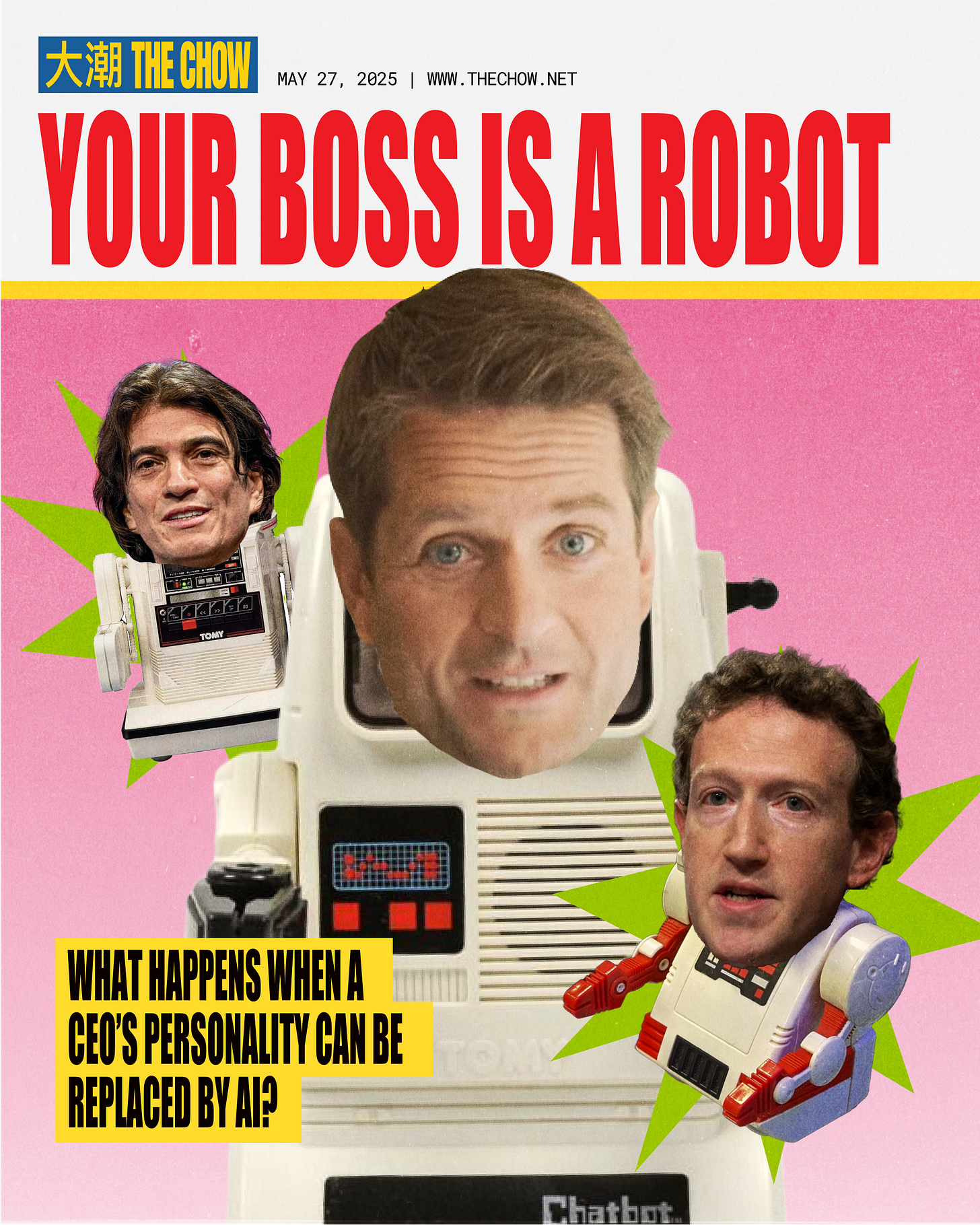Your Boss is a Robot
CEOs from Silicon Valley to Beijing all flaunt big, public personalities. New AI technology might change that, perhaps for the better.
Klarna, a financial services firm based in Sweden, announced its Q1 2025 earnings report—and they did it entirely with AI.
“It’s me! Or rather, my AI avatar, here to share Klarna’s Q1 2025 highlights,” says a digital clone of Klarna CEO Sebastian Siemiatkowski in a video. His voice wasn’t perfectly synced with his mouth movements, and the video had a fuz…
Keep reading with a 7-day free trial
Subscribe to THE CHOW to keep reading this post and get 7 days of free access to the full post archives.



